Going through puberty can be tough. Many teens grapple with social awkwardness, school pressure, confusion about the future, hormonal surges, and…
Acne.
But acne doesn’t only strike teenagers. In fact, many people struggle with it, to one degree or another, for their entire lives.
And even apart from acne, if you’re like most people, you want healthy skin. You know that beauty isn’t just skin-deep, but you want to look good. And you want your skin to feel good, too.
So, let’s take a deeper look. What causes acne? And are there foods that cause acne, or even fight it?
(Spoiler alert: Yes, there are foods that cause acne — and even better, foods that can promote clearer skin!)
What Is Acne? And Why Do You Get It?

Most of us have been there: Among our peers at school or at work, suddenly dealing with an eruption of embarrassing blemishes that appeared out of nowhere — as if on a mission to steal our confidence.
Acne is a skin condition in which pores (or hair follicles) — usually on your face, chin, chest, or back — become blocked.
So, what causes acne?
The sebaceous glands of your skin create an oily substance called sebum. An overabundance of sebum, in cahoots with an overgrowth of normal skin cells called keratinocytes, can clog your pores.
Both of these substances can promote excessive amounts of the bacteria that normally live on your skin, which can compound the problem.
Pores don’t like to be clogged. And when they are, the skin around them becomes red and irritated. This results in what we see as pimples, blackheads, and whiteheads.
But, what causes your skin to make the sebum and keratinocytes that clog your pores in the first place?
Both male and female bodies make hormones called androgens, which are known to trigger the production of both keratinocytes and oily sebum. Androgens increase during puberty, and women’s bodies also produce more of them during and after pregnancy, as well as with oral contraceptive use.
Acne can also be caused by a normal immune response to the skin bacteria that cause pimples, and even by imbalances in your gut.
Your body can also react poorly to certain personal care products, which will, in turn, cause acne to worsen. Choosing water-based, sheer, non-comedogenic cosmetics can help prevent clogged pores and clear up the skin, as can fragrance-free products and pure soaps with a neutral pH.
But above all else, the food you eat seems to be the biggest factor in fueling, or fighting, acne.
In fact, there’s so much evidence that the question of whether or not diet plays a role in acne isn’t really up for debate anymore.
What’s the Role of Diet in Acne?
Among people who eat the modern industrialized diet, acne is almost ubiquitous.
In the United States, for example, acne affects 79-95% of adolescents.
But among many non-westernized cultures, including New Guinea, Paraguay, and among the Inuit and Okinawans, acne is virtually non-existent.
Coincidence? Research says no.
Foods That Cause Acne: What Are the Worst Ones?
If there were an Olympics for the diet that was best for promoting the most chronic diseases, the modern industrialized diet would stand an excellent chance of winning gold.
It’s increasingly well-known that a diet high in sugar, processed foods, factory-farmed animal products, and chemicals fuels cancer, heart disease, type 2 diabetes, and a plethora of other diseases. But now we can add a new downside to the list: acne.
And here are the top three foods that cause acne and why:
1) Dairy
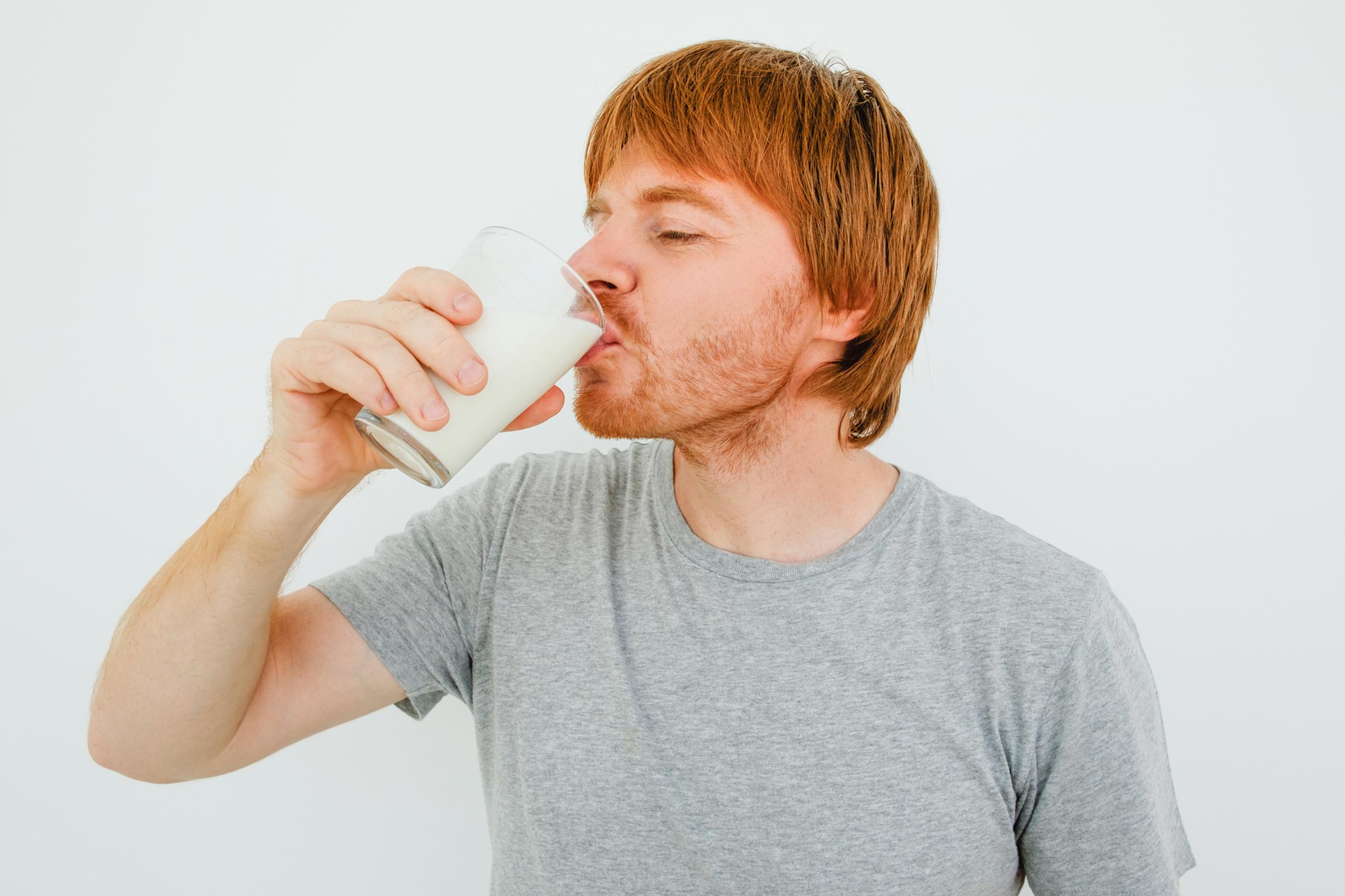
Scientists have been examining the link between dairy consumption and acne for a long time.
A 2011 study done as part of the Nestle Nutrition Workshop Series Pediatric Program concluded that in industrialized countries, the habit of consuming dairy products past infancy is the biggest cause of acne. The researchers suggested two solutions: either we stop drinking cow’s milk or we create a cow’s milk that doesn’t have these effects on our health.
The first one sounds a lot easier to me!
One reason dairy may contribute to acne is because it promotes insulin-like growth factor 1 (IGF-1).
Dairy products also increase the activity of an enzyme in the body called mTORC1, which contributes to the development of acne (as well as many other chronic diseases, such as insulin resistance, cancer, Alzheimer’s Disease, Parkinson’s Disease, and age-associated diseases).
Even if you don’t drink milk or eat cheese, a lot of the foods we eat today contain dairy. To be sure, check packaging labels for an allergen statement that will tell you if milk is an ingredient.
You can also choose plant-based milk products instead because they don’t share the same properties that make cow’s milk promote acne. Milk, yogurt, and cheese made from almonds, cashews, coconut, soy, hemp, and peas are nutritious, have many uses, and they taste great.
2) Refined Carbohydrates and Sugar
People who have acne tend to eat more refined carbohydrates than those who don’t have acne.
In fact, a 2012 study done in 2,300 adolescents in Turkey found that those who ate the most added sugars had a 30% increased risk for developing acne, and those who ate the most sugary baked goods had a 20% increased risk.
Why?
For one thing, refined carbohydrates can contribute to acne by causing more sebum production. They also have a higher glycemic index.
When the body digests foods with a high glycemic index, like white bread, white pastas, and sugary beverages, they enter your bloodstream faster than those with a low glycemic index, like kale, lentils, and whole grains.
Research shows that refined foods — the ones with a higher glycemic index — play a role in fueling acne. But studies have also found that a diet high in foods with a low glycemic index can improve acne. Many researchers now suggest that dermatologists tell their acne patients to eat less refined foods.
You can replace high glycemic index foods in your diet with more whole grains, such as quinoa, millet, barley, oats, and farro. Your whole body will thank you — and your skin may even clear up.
3) Fast Food

The modern industrialized diet features a lot of convenience foods that are laden with sugar, salt, and cheese.
One study found that participants who regularly consumed fast food, specifically sausages and burgers, had a 24% increased risk for acne.
We don’t know with certainty what it is about fast food that contributes to acne. Perhaps it’s the dairy, sugar, salt, animal products, or bottled oils that are usually in it. But we do know that it can fuel acne, and that just might be yet another reason to steer clear.
A Note on Chocolate
You’ve probably heard that sweets, especially chocolate, can cause acne. But it’s not that simple, so don’t go blaming your chocolate bar just yet.
There is some evidence that individuals who are prone to more severe acne may want to avoid cocoa, which is the basis of chocolate.
But what else is usually in a chocolate bar? That’s right — cow’s milk and sugar, two of the top diet-related contributors to acne. It’s not chocolate’s fault that we’ve clouded many of its proven benefits with so much dairy and added sugars.
What Can I Eat to Improve My Acne?
Now that you know the foods that cause acne, here are some of the foods and nutrients that can improve acne and contribute to clear, glowing skin:
Zinc
Zinc, a powerful anti-inflammatory and anti-bacterial, is more than just a lozenge to take when you start feeling sick. It has also been long studied as an acne treatment.
A 2014 study in the journal Biomed Research International found that lower serum zinc levels might be related to the severity and type of acne for some people. Increasing serum zinc levels by eating more zinc-containing foods can help clear up the skin.
You can take zinc as a supplement — as zinc acetate, zinc gluconate, or zinc sulfate — or apply it directly to your skin. You can find zinc in foods like toasted wheat germ, whole grains, nuts, and beans.
Green Tea
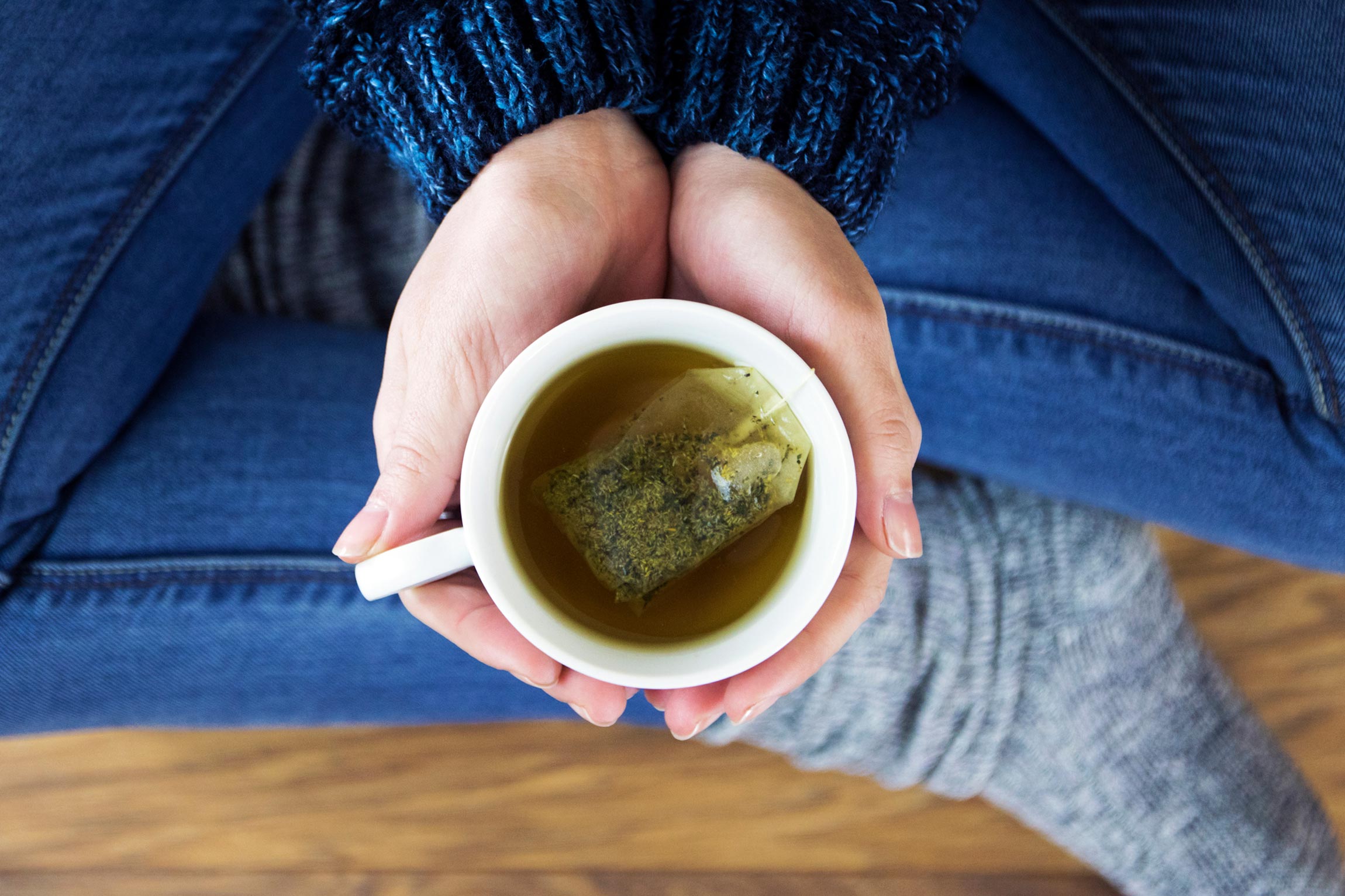
Polyphenols in green tea have been shown to reduce sebum production and skin inflammation, even when applied topically to the skin.
A 2010 study in the Bosnian Journal of Basic Medical Sciences applied 3% ethanolic green tea extract to the healthy skin of ten men 24 to 40 years old for eight weeks, observing a statistically significant reduction in how much sebum their skin produced. They found a 10% reduction of sebum in the first week and a 60% reduction by the end of the eight-week trial.
Many people report experiencing these effects after drinking green tea daily for just a few weeks.
Turmeric
Turmeric, a bright yellow spice often used to flavor Asian and Middle Eastern dishes, has been used medicinally for hundreds of years.
Curcumin is a potent polyphenol in turmeric, and has been shown to reduce bacteria production that can lead to acne. Studies have shown turmeric to be beneficial for skin health when used both topically and when eaten.
You can add turmeric to soups, rice dishes, hot tea, smoothies, or stir-fries.
Omega-3 Fatty Acids
Omega-6 fatty acids are pro-inflammatory, and omega-3 fatty acids are anti-inflammatory.
It’s important to eat the right balance of omega 6 to omega 3 fatty acids for our health. There is plenty of debate about what the optimal balance is. Some researchers think it should be 4:1, while others think it should be 1:1.
But most of us are eating closer to a 16:1 ratio, and I don’t know anyone who thinks that’s optimal.
As you can imagine, this results in a pro-inflammatory diet, which may promote acne, among many other diseases.
Omega-3 foods can easily be increased by adding ground flaxseed to your casserole, chia seeds to your smoothie, or taking an omega-3 supplement (DHA and EPA can be made from algae — here’s my favorite source, which also supports Food Revolution Network).
And you can reduce omega-6 sources by minimizing or eliminating consumption of fried foods and processed vegetable oils, like sunflower, corn, and soybean.
Vitamins A, E, and D
Having low levels of fat-soluble vitamins A, E, and D have been observed in many individuals who have acne. On the other hand, supplementing acne patients with these vitamins may be able to improve their skin.
- Vitamin A is found in carrots, sweet potatoes, squash, pumpkin, cantaloupe, apricots, and dark leafy greens.
- When exposed to sunlight, the skin makes Vitamin D. You can also consume it in the form of a vitamin D3 supplement.
- Vitamin E is abundant in peanuts, sunflower seeds, broccoli, and hazelnuts.
Antioxidants
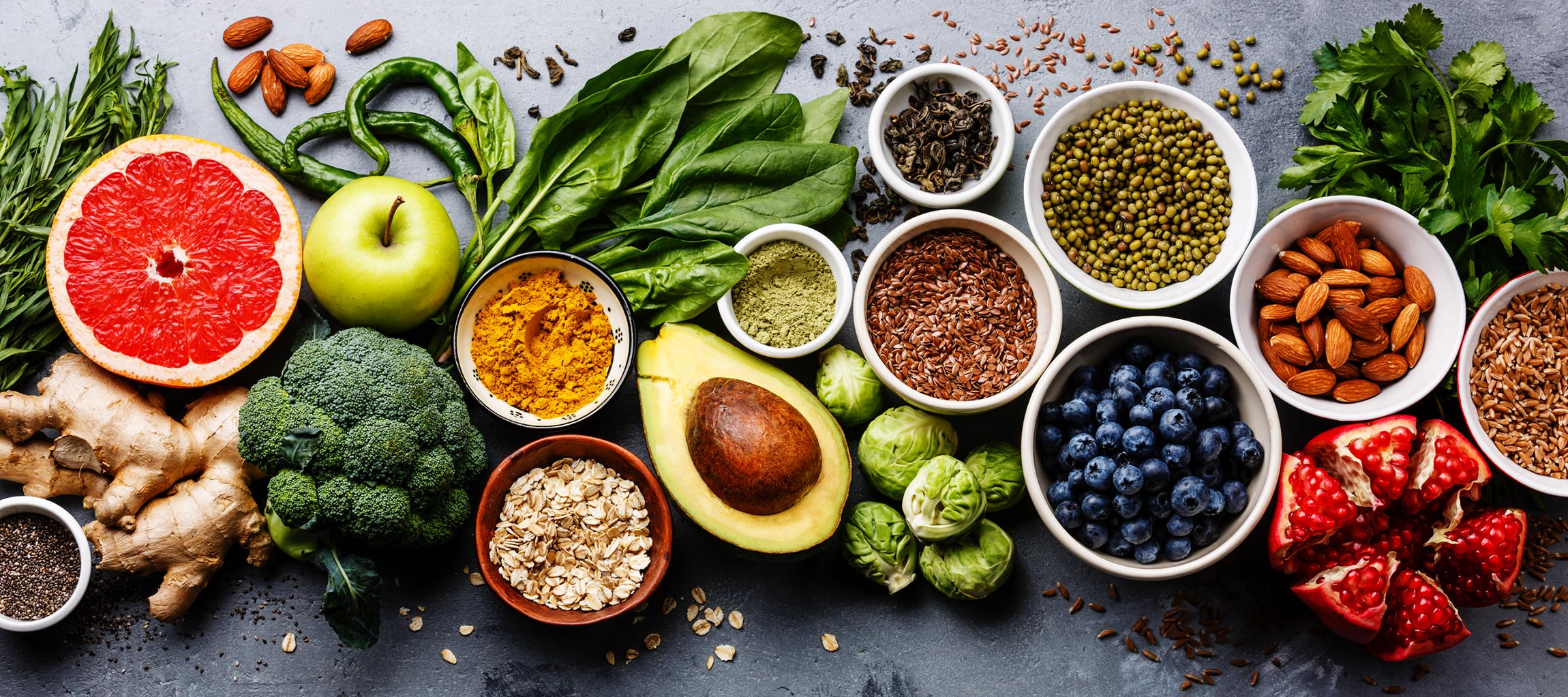
Colorful plant foods contain powerful compounds known as antioxidants. They’ve been shown to help prevent and reverse many diseases — and it turns out they may also help prevent acne.
Some of my favorite ways to eat more antioxidants are by adding a variety of colorful berries, citrus fruits, and dark leafy greens to my diet. Learn more about the best sources of antioxidants in our article, here.
One particularly powerful antioxidant when it comes to acne is resveratrol, which may have the ability to prevent the overgrowth of the Propionibacterium acnes bacteria. Resveratrol is abundant in blueberries, cranberries, red grapes, peanuts, pistachios, red wine, and dark chocolate.
Barberries are one of the most antioxidant-rich dried fruits available, and they have also been shown to be highly effective in acne treatment.
A 2012 placebo-controlled clinical study on fifty 12 to 17-year-olds with acne found that those who were given barberry (about a teaspoon dried three times daily for one month) experienced a 43% reduction in pimples. Barberries are usually easier to find dried than fresh.
Probiotics and Fermented Foods
Functional medicine, an approach to health that looks at the whole-body connection and sees acne as an inflammatory condition, tells us that there may even be a connection between the health of your gut and the condition of your skin.
You can help repair this connection by eating more foods that support a healthy gut bacteria balance, such as fermented foods and probiotics.
Probiotics might be able to help your skin directly, too. A 2017 study in the journal Scientific Reports found that the bacterial balance of the skin has a lot to do with acne development, and probiotics can be helpful.
Probiotics can be found in supplement form or in fermented foods, such as tempeh, sauerkraut, kimchi, kombucha, yogurt, miso, and natto.
Eat More Plants, Enjoy Clearer Skin
For many people, skin health is a vexing problem. And it’s influenced by some factors that are beyond your control.
But diet isn’t one of them. And it turns out that what you eat can make an enormous difference for acne — and for skin health overall.
A whole-foods, plant-based diet that minimizes dairy, sugar, and fast foods — and that’s rich in antioxidants and critical nutrients — can do more than fight acne. It can also help to restore the sheen to your skin and bring vitality to every cell in your body.
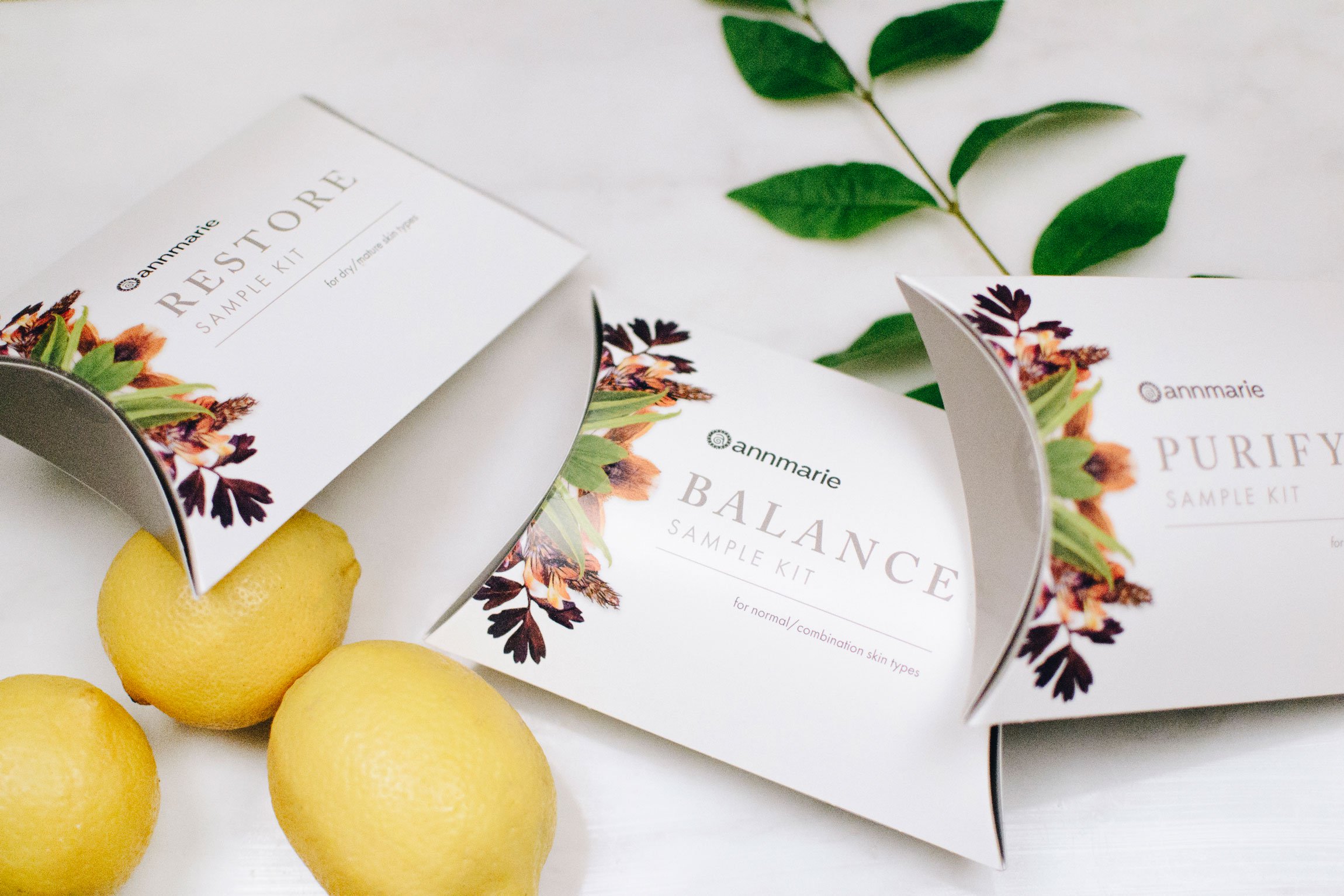
Check out our favorite skincare products — all wildcrafted and organic — from Annmarie Skincare. Find out more and get a sample kit here.
Tell us in the comments:
-
What are your experiences using foods to fight acne?
-
Do you have experiences with foods that cause acne?
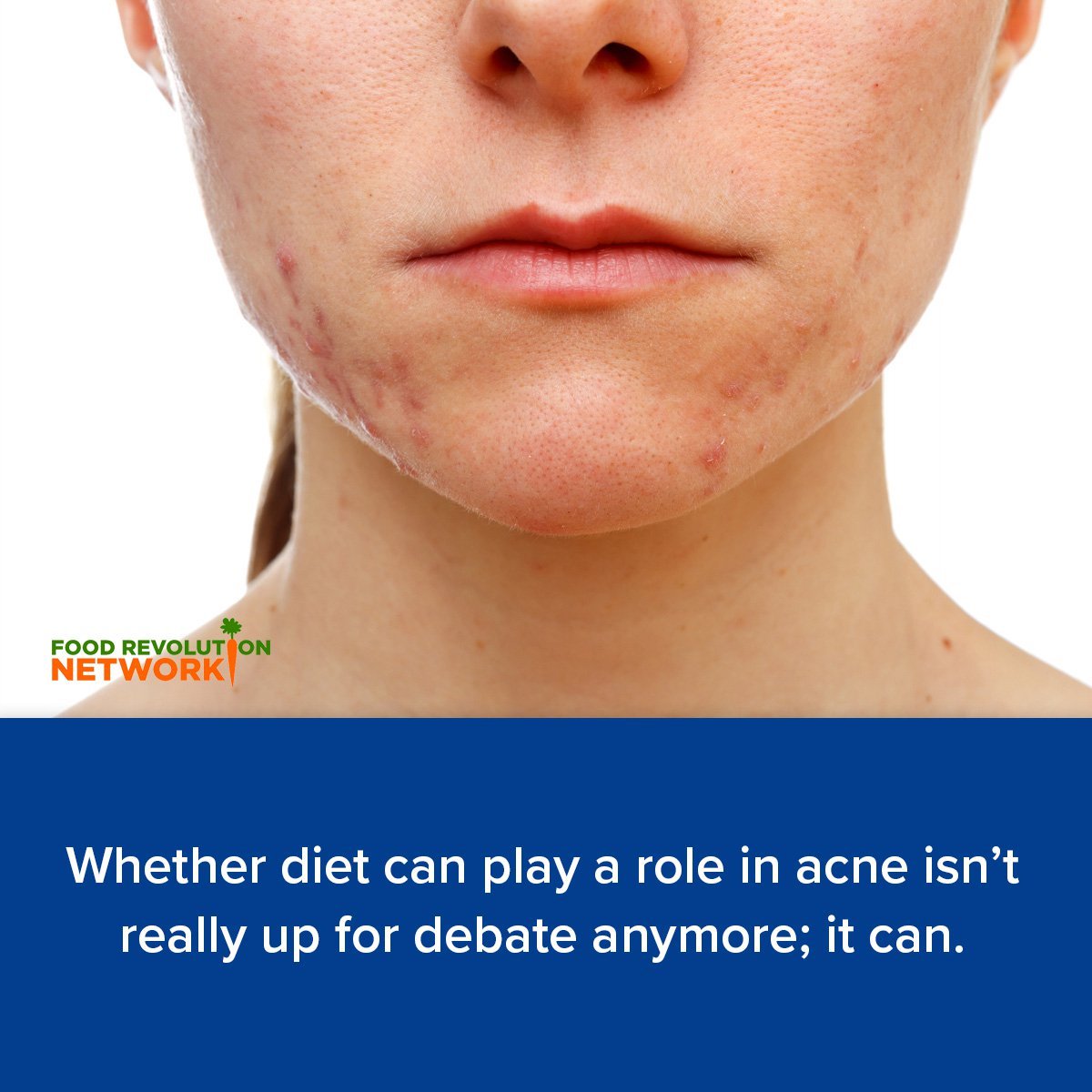
Featured Image: iStock/Sasha_Suzi




